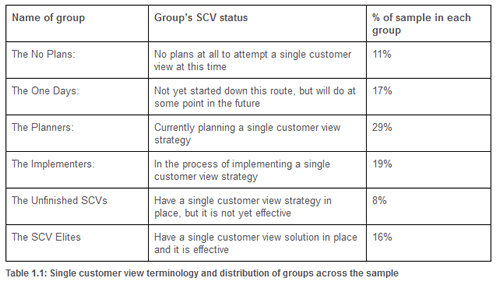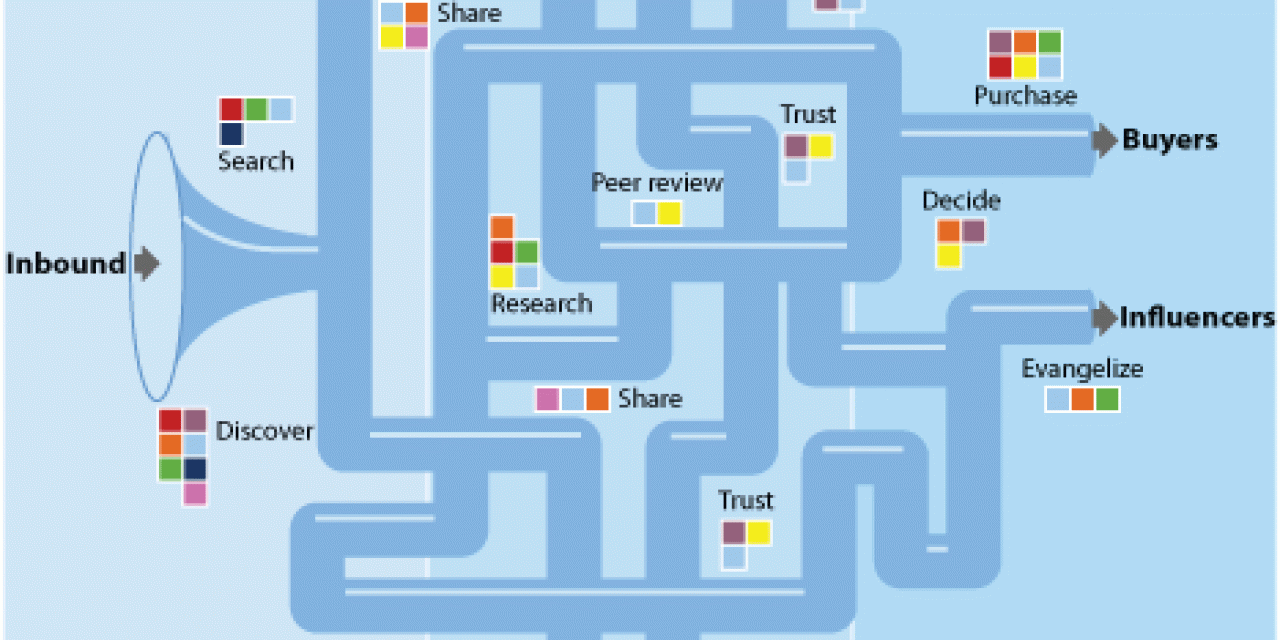 Allow me to repeat some key trends that describe the connected buyer’s journey and integrated marketing reality. An educated ‘prosumer’, a shift from selling to buying, media and device proliferation, increasingly channel-agnostic customer behavior, more opportunities to gather information and consider options throughout the buyer’s journey, etc.
Allow me to repeat some key trends that describe the connected buyer’s journey and integrated marketing reality. An educated ‘prosumer’, a shift from selling to buying, media and device proliferation, increasingly channel-agnostic customer behavior, more opportunities to gather information and consider options throughout the buyer’s journey, etc.
The path to purchase is more complex, at least it is for businesses. How do email messages, online ads, offline, social, content, recommendations, sales efforts, trade shows and all the other touchpoints interact with one another? How do we provide customers and prospects what they need/want at any given time on a personalized level? How do we bring our unique propositions under the attention of customers and prospects that don’t even consider nor need us? How do we create value by offering value when and where we see it matters for whom in an increasingly real-time reality?
The good news: the buyer’s journey has been evolving towards more digital touchpoints. Great from a measurement perspective.The number of touchpoints increased and the stages at which buyers use online channels and sources vary more than before. Traditionally we have looked at selling, buying and lead nurturing as a gradual process: a funnel and a customer life cycle model. Many of these models were quite linear. However, it was and is a way to understand journeys that didn’t fully reflect reality, especially today. That’s what models are: ways to understand and plan. We know that the funnel model is not adequate and we try to come up with new, more complex models that fit the reality better like the “Seussian” one Forrester’s Lori Wizdo introduced a few years ago.
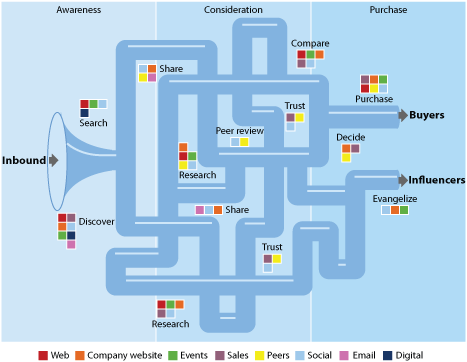
At the same time we don’t have to make things more complex for the sake of it. We can still talk about the top of the funnel, to give just one example. Despite all evolutions many organizations still have a lot of work to get the – increasingly social and digital – basics right, regardless of tactics. This is overlooked all too often. Staging the buyer’s journey still matters for most of us.
Yet, we also need to realize that organizations having reached a certain maturity level and wanting to be champions will even have to go beyond dropping the funnel and look at the customer experience on more connected and at the same time personalized levels beyond the “individual” journey: end-to-end.
There are many opportunities to follow the customer in lead nurturing and sales processes once they enter your company’s (online) influence sphere and become “measurable” but even then you never really know everything. In an omnichannel, or better a channel-agnostic (and device-agnostic world) where time, place and channels matter less from the customer perspective, this is an additional plea to implement marketing ROI on campaign, macro and micro levels and to look more at the customer life cycle from a touchpoint perspective, taking into account the customer experience and customer lifetime value. A holistic approach. A view in which marketing automation (or whatever we want to call it nowadays) is an integrated part (with a somewhat unfortunate name) that is designed around those ‘touches’ and fits in a broader approach where there is room for social interaction and no room for siloed thinking.
But, again, it is a staged approach, one that requires cultural change, change management and digital transformation along with a reversed customer view ‘en route’ to a cross-touchpoint customer experience model, as shown in the Forrester Research graphic below (read more about it here). This is also an intermediate approach.
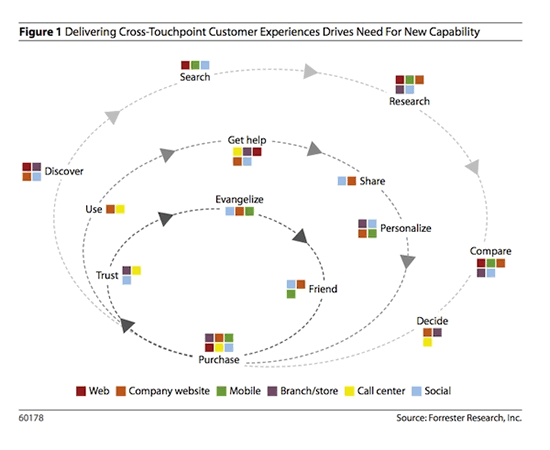
Integrated marketing and experiences across the buyer’s journey
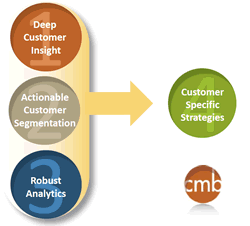
It is obvious that the purchasing process is all but linear and never was to start with. People come and go. They enter and leave the funnel or whatever other model you use at any time. Attribution is a huge challenge. And automation is just a partial solution as you still need to be able to read and understand the signals and data regarding this complex reality.
No customer is the same and interpreting intent is not just a matter of data. Every company has a different business model, go-to-market strategy and selling/buying cycle. In other words: context matters more than ever and we can’t afford to fight silly fights over buzzwords and tactics or even best practices anymore.
The only view that matters is the customer’s view (and our – single – customer view based on what we have the pleasure to “receive” and obtain in exchange for relevance and excellent service and experiences). We need to know what makes customers tick, realizing that different customers need to be treated…differently.
The way to tackle all these challenges is gradually building an integrated (digital) marketing approach, based on connected experiences, and deploying several tactics such as content marketing, email marketing, search, etc. in a horizontal way and in function of business goals, not of tactical goals. Obviously it is supported by data and feeds additional insights towards a richer single customer view (more about that later). It requires a customer-centric view looking at the perceived value across all touchpoints, today using personas and, ideally (and certainly in a very near future) taking it on a more personalized level, moving towards a right-time approach.
The non-linear buyer’s journey and the limits of the funnel metaphor have existed for a long time; they are only becoming clearer and more pressing. Start integrating: not just the tactics and programs but the overall business and technology ecosystem of the organization and the different moments of truth across the connected customer life cycle.
The single customer view
In order to optimize the customer experience of customers and prospects – in the strict sense – across channels, departments and touchpoints, a single – or at least far broader – customer view is of the utmost importance. However, disconnected systems and processes, a lack of strategy and a failing ability to work across the silos are among the many reasons why this single customer view is still impossible for numerous businesses.
Marketers know how important it is to use customer data in order to improve their results and customer satisfaction, the step towards brand advocacy. Gaining the right customer insights and acting upon them is key to offer the right information and right experiences at the right time. It’s what content marketing is about. It’s what integrated marketing is about.
Numerous reports have been showing this need for customer-centricity over the past years. Research by Experian , for instance, showed ‘companies understand the importance of customer-centricity but fail to come to terms with data explosion’.
However, only 16% of respondents was actually capable of having a real single customer view. The challenge is not only one of strategy, integration, culture, systems and processes. It is also often one of a lack of customer-centricity (there is a difference between saying you are customer-centric and being it…) and one of data coming from multiple channels. Big Data. Fast Data. Right Data. Knowing which data matter, using them in an integrated way and, obviously, acting upon them is not easy. However, businesses don’t have much choice when looking at the channel-agnostic, multi-screen and increasingly complex behaviour of today’s consumer.
Businesses that don’t have a single customer view, feel they are missing out on opportunities, according to the research from 2012: 85% said the lack of a single customer view led to business problems and 18% believed they were missing important opportunities of cross-selling and up-selling.
The bigger picture of integrated marketing: data + experiences
The main business driver for implementing a single customer view is the increasing understanding that the customer should be put first. 50% of respondents said they would see better customer service levels and 41% acknowledge they would see better customer retention. Integrated marketing in the end is about putting that customer first whereby the integration is a normal consequence. Sure, there are systems to be integrated (and 2013 was clearly the year that marketing software vendors prepared for a further evolution in this regard), processes need to be reviewed, the siloed view needs to be reseen and getting integrated marketing done is not a walk in the park. However, first and foremost the key rule remains that integrated marketing just puts the needs, emotions, values, journey, behavior, etc. of the customer first. Integrated marketing is about the customer experience and the clear marketing benefits of improving it, always.
When looking at Alterian’s 2012 research and comparing it with research from 2013 in different domains and from various resources (not just vendors as in this case), it’s clear that not much has changed. The focus on tactics and isolated activities continues to trump what common sense says: everything gets connected and integrated. And a single – or at least broader customer view – matters with integrated marketing as a consequence. It’s clear that data will be a differentiating factor in that regard.
Without an ethical and proper use of the right data and without the ability to work across silos, regardless of the business function, your competitors with a more integrated approach and holistic view will keep doing better, certainly the coming years when information and data, along with an unconditional customer-centric approach, will make the difference even more.
How to tackle it? Start by looking at how you allocate your budgets, for instance…
